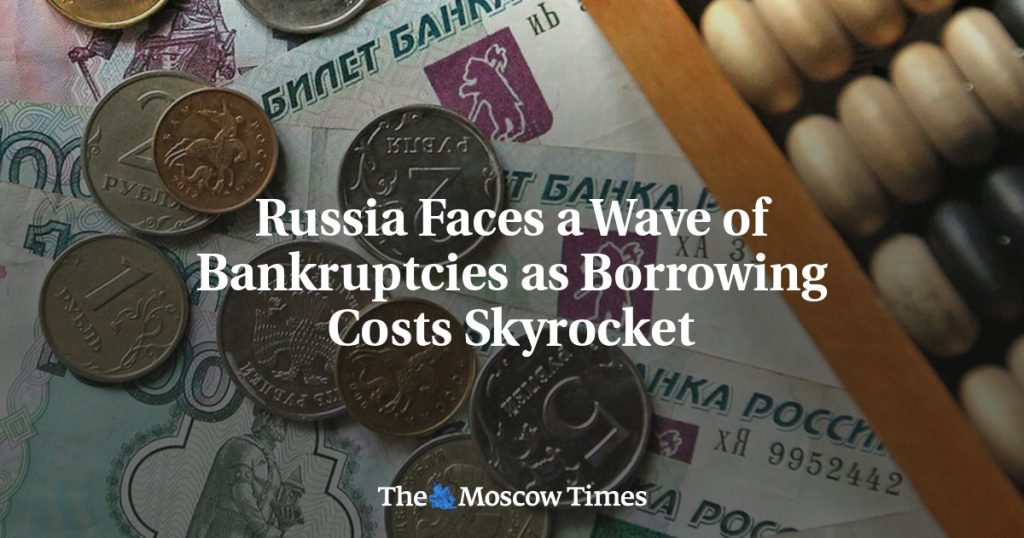The financial situation in Russia is becoming increasingly dire as businesses face a looming financial crisis. The Central Bank’s interest rate has reached a staggering 21%, with expectations for further hikes in December. Companies are struggling to service their debts under these high rates, with interest payments consuming a significant portion of their earnings. The likelihood of defaults and bankruptcies has risen sharply, as late payments from customers and partners have been on the rise, signaling distress in the corporate sector.
The surge in floating-rate loans, which now constitute 53% of corporate borrowing, combined with the weakened ruble and heightened government spending, has driven up inflation and fueled further rate hikes. The demand for loans has increased as businesses race to secure capital ahead of anticipated new restrictions, leading to a 22% expansion in loan portfolios over the past year alone. The cooling economy and a sharp slowdown expected in 2025 will only increase the pressure on corporations further, with prospects for the Central Bank to ease monetary policy remaining remote as long as the war in Ukraine continues.
Corporate bankruptcies in Russia have increased by 20% this year, with signs of distress intensifying in recent months. The retail sector, in particular, is vulnerable, with shopping centers and other businesses petitioning the government for relief measures such as subsidized interest rates, debt restructuring, and payment deferrals. The situation is becoming increasingly unsustainable for manufacturers, with high interest rates wiping out profits and pushing many businesses toward bankruptcy. The corporate bond market is also facing challenges, with high rates making bonds unaffordable as a source of capital.
Industries such as paper and wood processing, wholesale trade, agriculture, and the coal industry are already feeling the effects of the financial crisis, with some sectors in crisis due to sanctions and other challenges. The construction sector has been hit hard by delayed payments and the end of a mortgage subsidy program, causing a significant decline in mortgage loan applications. Real estate companies have resorted to offering subprime financing programs, similar to those that led to the 2008 financial crisis in the U.S., in an attempt to boost sales.
Retail loans have also been impacted, with the Central Bank attempting to cool consumer borrowing that was contributing to inflation. The likelihood of default among consumers has risen, and long-term overdue payments are becoming more common. Historically, corporate bankruptcies and bond defaults tend to surge after rate hikes, a trend that could manifest before year-end as companies face imminent bond repayments. Oligarchs and business leaders are warning that the current interest rates are making it more profitable for companies to halt expansion or downsize rather than continue operations.
Overall, the financial crunch facing Russian businesses is putting many of them at risk of bankruptcy and financial ruin. The combination of soaring interest rates, growing debts, and economic challenges is creating a perfect storm that could have long-lasting consequences for the Russian economy. If measures are not taken to address the root causes of the crisis and provide relief to businesses in distress, the situation may continue to deteriorate, leading to widespread insolvencies and economic instability.


